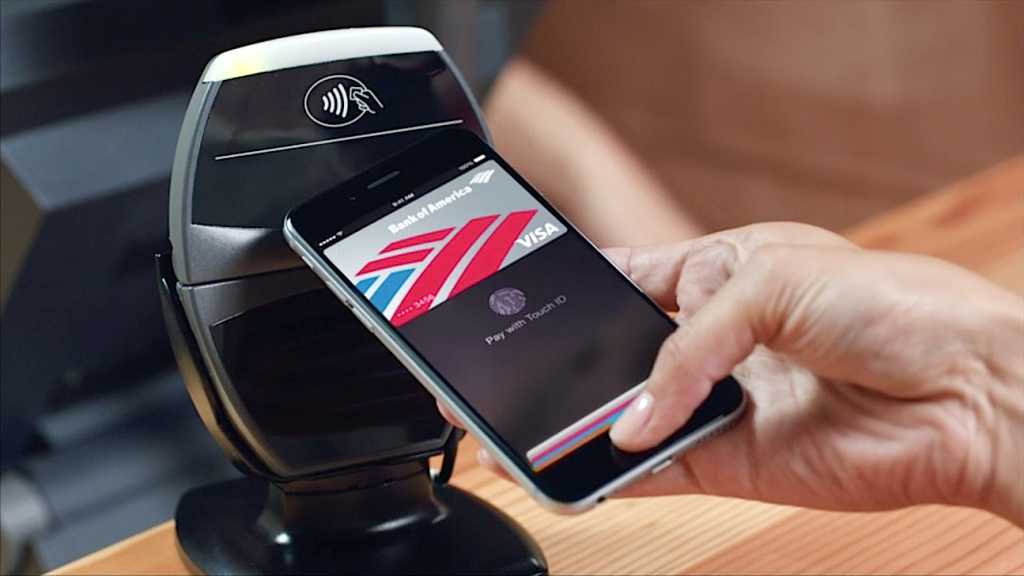
Banks and alternative platforms are not the only methods of getting your mobile pay fix in today’s market. In this blog, we are going to explore one of the newest, yet fastest growing mobile pay platforms around: Apple Pay.
Apple Pay was launched in 2016, with rollout coming to various markets slowly throughout the year1. It essentially functions as a one stop shop for all your mobile payment needs on any Apple device. You can load your debit or credit cards from any bank in North America into your ‘Apple Wallet’ and pay directly from there1. After that, making payments is as simple as tap and go, as the Apple Pay software utilizes the same techniques as other mobile pay apps (NFC chips as mentioned in previous blogs). Apple charges a fee to banks looking to have their cards registered on the service, which varies from 10-15 cents per $100 spent, depending on the country you live in2. It also offers customers high security and confidentiality, as Apple has stated they record no transaction information on their servers and the payments require the consumer to provide their fingerprint for processing2.

You might find yourself asking why banks would be interested in allowing their cards to be used via Apple Pay, since there is such a hefty fee taken which cuts into their revenue. However, when you look at consumer behaviour it is clear why no bank would want to be left behind. The convenience of having all of your bank cards loaded into one mobile wallet (as opposed to spread across different applications) cannot be overstated in the mind of the consumer2. Banks are desperate to hold on to their client base and any advantage another bank offers must quickly be mitigated, which has led to all banks signing up for the service2. Additionally, in Canada alone 44% of the smartphone market belongs to Apple and 85% of all stores are equipped to accept Apple Pay2. We discussed in our previous blog how important convenience was in the mind of consumers, which makes Apple Pay compatibility essential for major banks. No institution wants to be left in the dust, only offering non-optimal mobile pay solutions for their customers. Globally, Apple Pay may not pose as much of a threat to bank specific mobile pay apps. Apple only controls 15.4% of the global smartphone market, a far cry from their domestic market control3. However, any loss of customers due to payment services cannot be overlooked. Apple has managed to leverage their large network of users into an effective competitive advantage in the market.
Apple Pay is an interesting example of how competitive the mobile payment market can be. By offering a service that envelopes what individual banks offer, Apple has managed to entice consumers to adopt their payment platform. Now a hardware/software company is a major player in a market based on commerce. Technology has paved the way for non-traditional companies to compete in totally new market spaces by effectively utilizing their network advantages and Apple is capitalizing on that opportunity.
Footnotes
1 Betters, Elyse. (2016, April 4). Apple Pay explained: What it is and how does it work? Pocket-lint. Retrieved From http://www.pocket-lint.com/news/130870-apple-pay-explained-what-is-it-and-how-does-it-work
2 Behar, Rose. (2016, May 13). What Apple Pay means for mobile payment in Canada. Mobilesyrup. Retrieved From http://mobilesyrup.com/2016/05/13/what-apple-pay-means-for-mobile-payments-in-canada/
3 Jones, Chuck. (2016, Feb 21). Apple’s iPhone: Market Share Vs. Profit. Forbes. Retrieved From http://www.forbes.com/sites/chuckjones/2016/02/21/apples-iphone-market-share-vs-profits/#61f9c70b46f8
